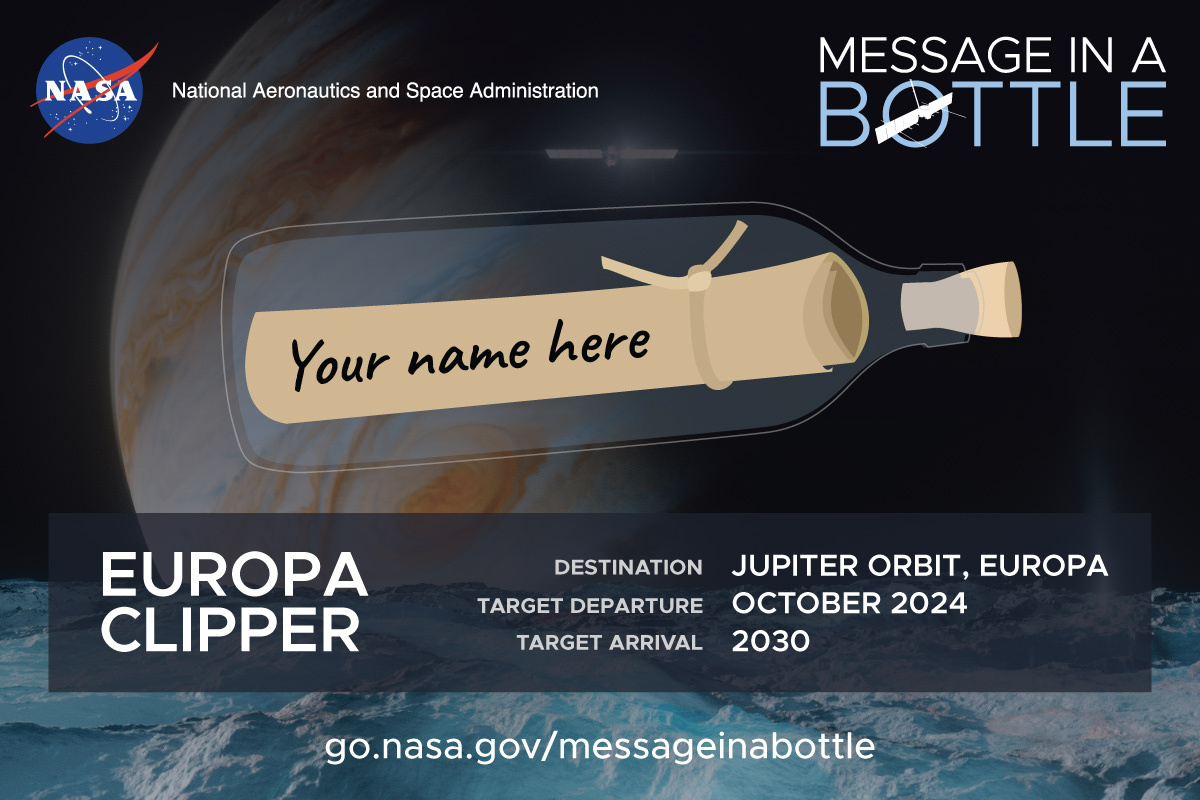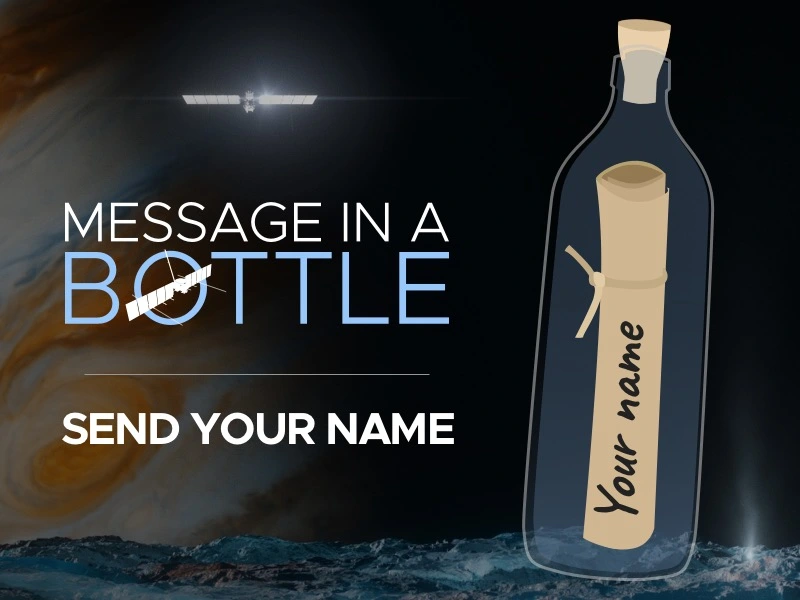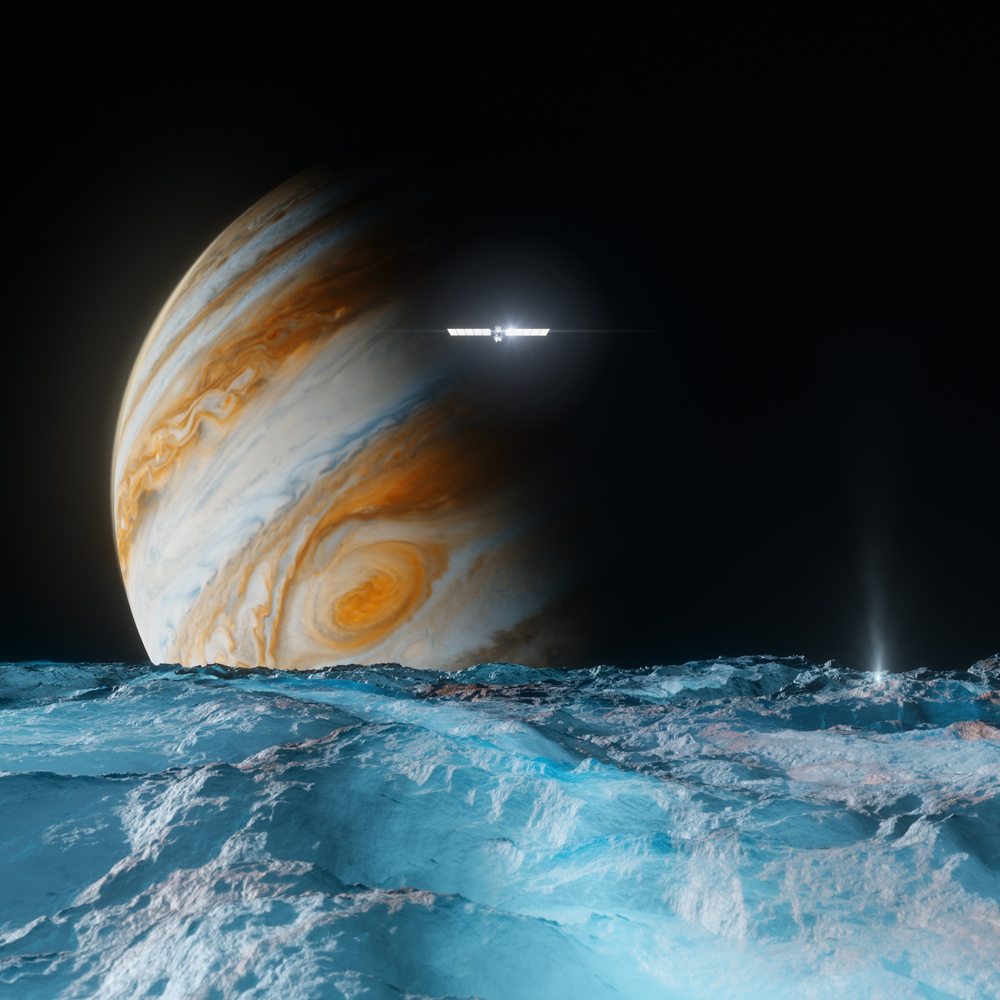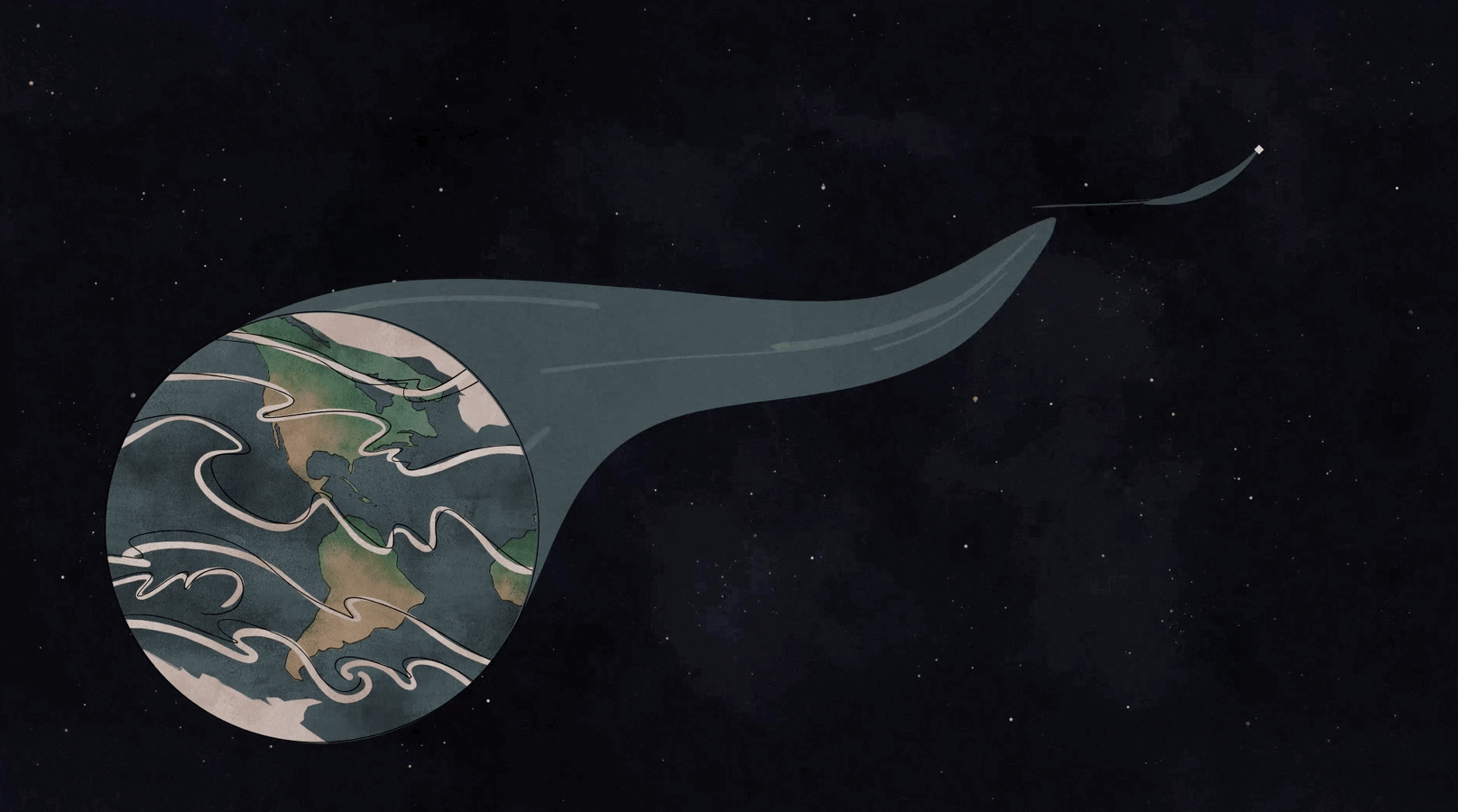Toolkit PurposeToolkit Purpose
This toolkit provides useful information for NASA Europa Clipper’s Message in Bottle campaign, including information about the campaign, images and assets, and links to resources.
Send Your Name to EuropaCampaign Overview
NASA’s Message in a Bottle campaign invites people around the world to add their names to a poem written by the U.S. Poet Laureate Ada Limón. The poem connects the two water worlds — Earth, yearning to reach out and understand what makes a world habitable, and Europa, waiting with its secrets yet to be explored. The campaign is a special collaboration, uniting art and science, by NASA, the U.S. Poet Laureate, and the Library of Congress.
On June 1, 2023, Limón debuted the poem, titled “In Praise of Mystery: A Poem for Europa”.

The poem is engraved on NASA’s robotic Europa Clipper spacecraft, along with participants' names that will be etched onto microchips mounted on the spacecraft. Together, the poem and participant’s names will travel 1.8 billion miles on Europa Clipper’s voyage to the Jupiter system.
Water connects Earth and Europa, the two ocean worlds the Europa Clipper spacecraft travels between on its journey. The existence of a vast ocean on a moon of Jupiter – which the Europa Clipper mission is equipped to decisively confirm – is what makes Europa such a promising place to study habitability for life beyond Earth.
Europa Clipper is set to launch from NASA’s Kennedy Space Center in October 2024 and by 2030, it will be in orbit around Jupiter. It will conduct multiple flybys of Jupiter’s icy moon Europa, to gather detailed measurements to determine if the moon has conditions suitable for life.
ImagesImages
Campaign VideoCampaign Video
GIFsGIFs
Europa Clipper Fast FactsEuropa Clipper Fast Facts
-
Europa Clipper will orbit Jupiter and make nearly 50 flybys of Europa.
-
Europa Clipper is the largest spacecraft ever developed for the outer planets.
-
With its solar arrays deployed, Europa Clipper spans more than 100 feet (about 30 meters) – about the length of a basketball court.
-
Each wing is approximately 46.5 feet (14.2 meters) long and about 13.5 feet (4.1 meters) high, roughly the height of two people. The huge arrays are needed to collect sunlight to power the spacecraft while it operates at Jupiter, which is more than 5 times as far from the Sun as Earth is.
-
The spacecraft’s propulsion module is 10 feet (3 meters) long and 5 feet (1.5 meters) wide.
-
The spacecraft has 9 dedicated science instruments, plus gravity/radio science.
-
At launch, Europa Clipper will weigh approximately 13,000 pounds. Nearly 6,000 pounds will be propellant.
-
Europa Clipper's electronics are enclosed in a vault with walls made of 1/3-inch thick (9.2-mm) sheets of aluminum-zinc alloy to protect the electronics from Jupiter’s intense radiation.
-
The spacecraft has 24 engines.
-
Europa Clipper will launch in October 2024 and travel for 5.5 years to the Jovian system. The spacecraft will fly by Mars, then back by Earth, using the gravity of each planet to increase its momentum. The spacecraft will arrive in the Jovian system (Jupiter Orbit Insertion) in April 2030 and start fine tuning its orbit.
-
Europa Clipper’s science campaign will begin in May 2031 and will last for approximately 3 years.
-
It takes approximately 45 minutes to send a signal from Earth to a spacecraft at Jupiter, and another 45 minutes to receive a signal on Earth back from the spacecraft.
Europa Fast FactsEuropa Fast Facts
-
Jupiter’s moon Europa shows strong evidence of an ocean of liquid water beneath its icy crust. Beyond Earth, Jupiter’s moon Europa is considered one of the most promising currently habitable environments in our solar system.
-
Below Europa’s icy surface, evidence suggests there is a global ocean with over twice the volume of all Earth’s oceans combined.
-
Europa could have all the “ingredients” needed for life as we know it.
-
Water: Twice as much as all of Earth’s oceans combined
-
Organics: Essential chemical building blocks from a variety of sources
-
Energy: Chemical energy sources from the surface and the sea floor
-
Stability: “Simmering” for 4 billion years
-
-
Europa was discovered in 1610 by Galileo.
-
Scientists think Europa’s ice shell is 10 to 15 miles (15 to 25 kilometers) thick, floating on an ocean 40 to 100 miles (60 to 150 kilometers) deep.
-
Europa is about 90% the size of Earth’s moon.
-
Europa orbits Jupiter every 3.5 days and is locked by gravity to Jupiter, so the same hemisphere of the moon always faces the planet.
More About the Mission
Europa Clipper’s main science goal is to determine whether there are places below the surface of Jupiter’s icy moon, Europa, that could support life. The mission’s three main science objectives are to understand the nature of the ice shell and the ocean beneath it, along with the moon’s composition and geology. The mission’s detailed exploration of Europa will help scientists better understand the astrobiological potential for habitable worlds beyond our planet.
Stay Connected
Follow Europa Clipper’s journey to Jupiter’s icy moon Europa with the mission’s social media accounts.
Twitter: https://twitter.com/EuropaClipper
Facebook: https://www.facebook.com/NASAEuropaClipper
Instagram: https://www.instagram.com/nasasolarsystem









